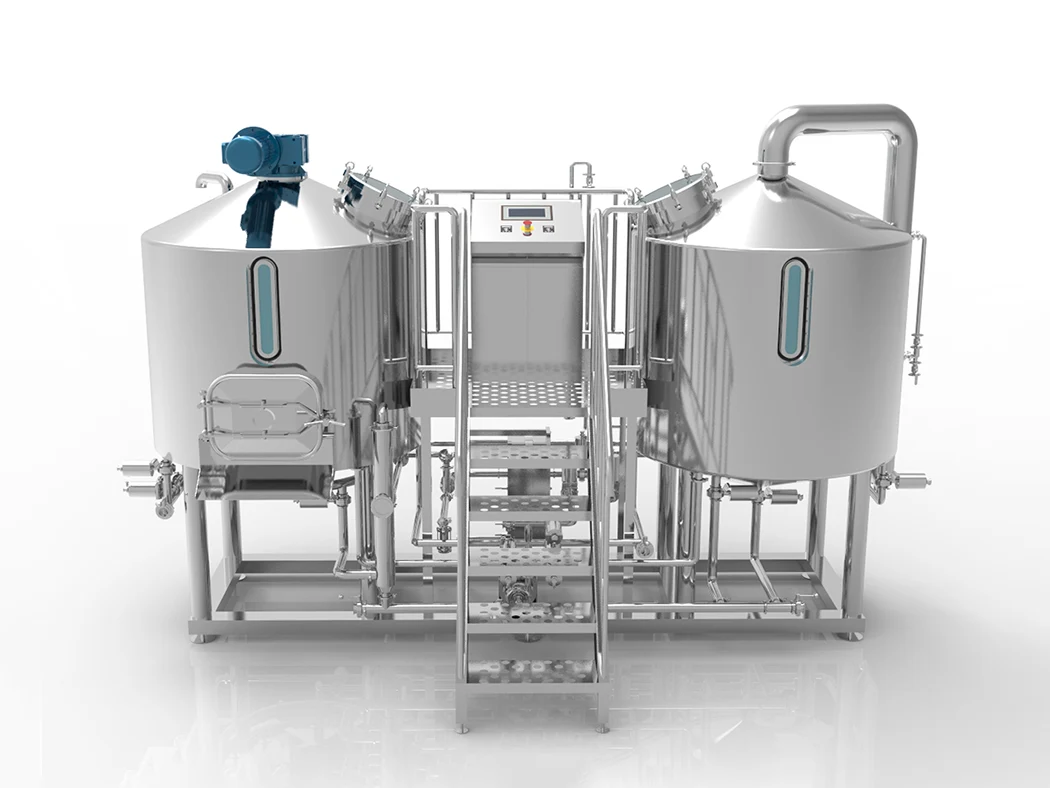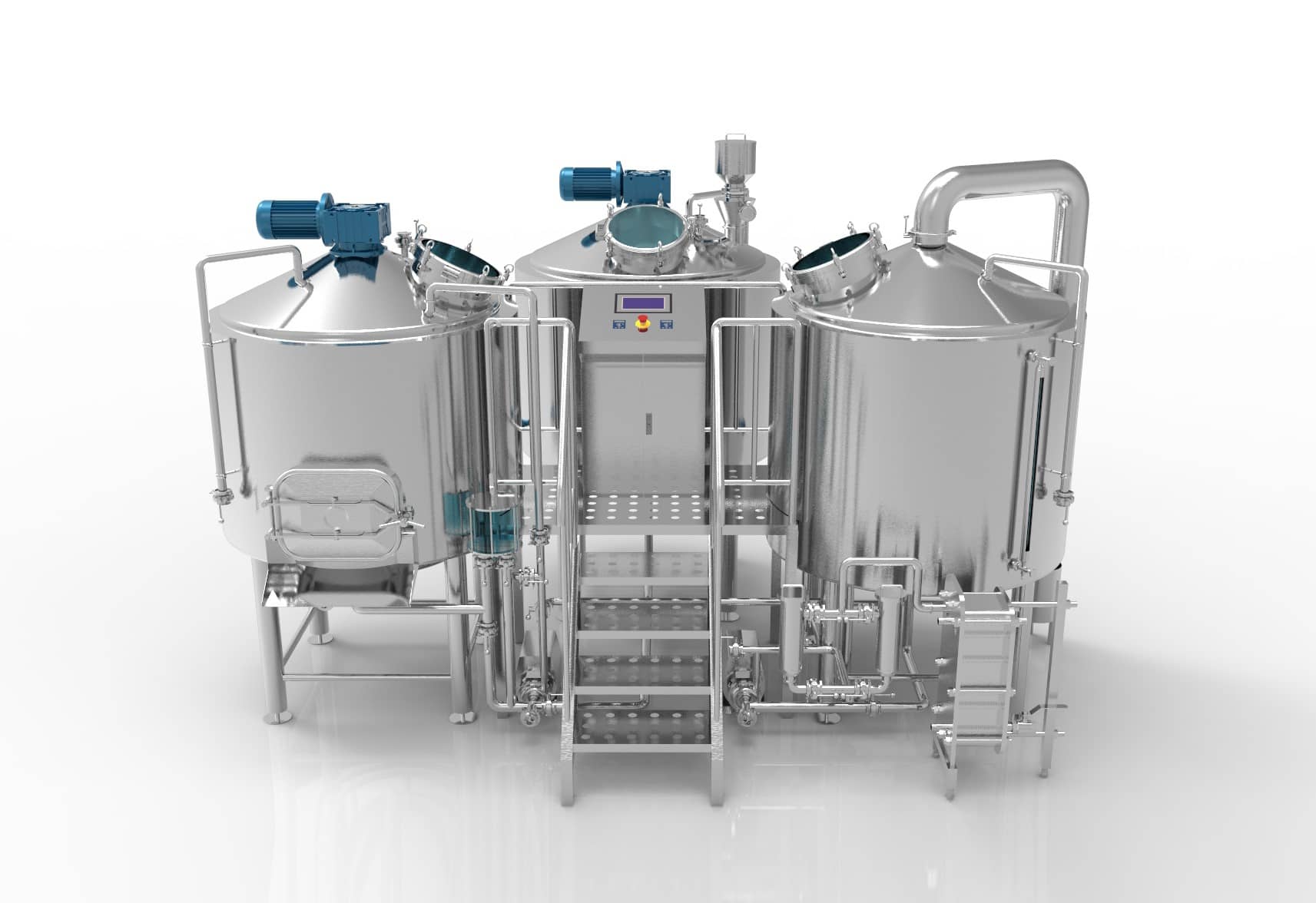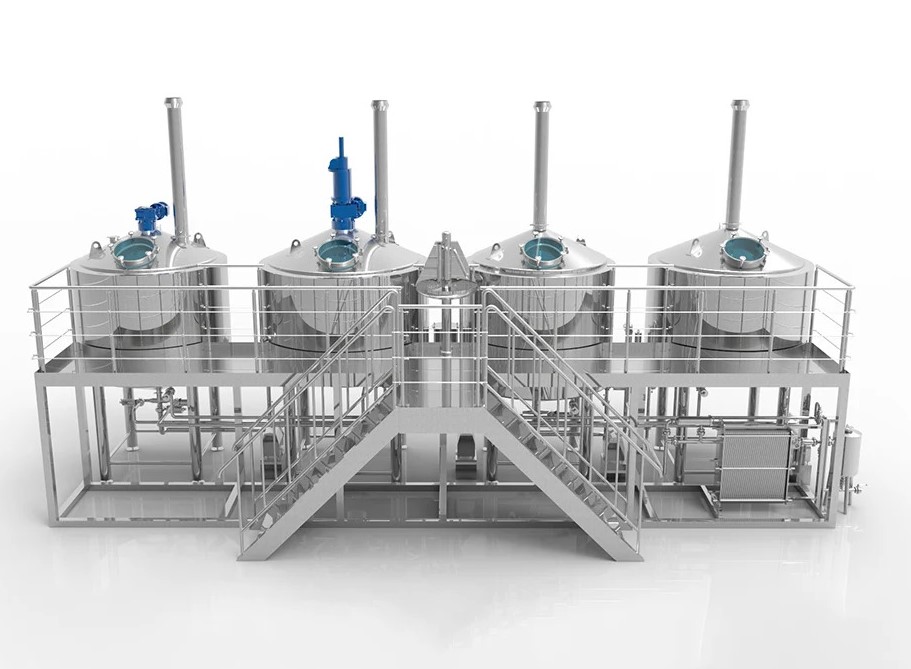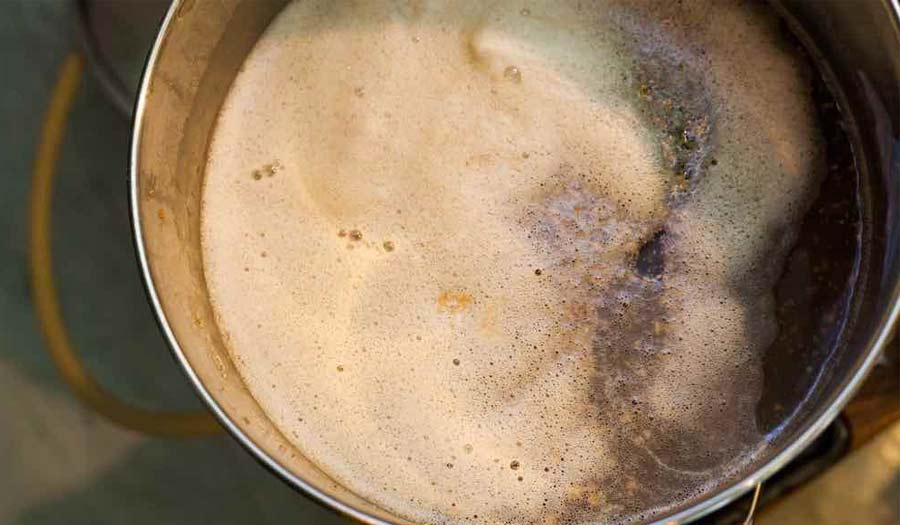ビール醸造用ケトルは、ビール醸造愛好家が自宅で醸造するために不可欠な道具のひとつである。その品質はビールの風味、味、成功率に直接関係します。ビール醸造の初心者や経験者にとって、適切なビール醸造ケトルを選ぶことは非常に重要です。市場にはさまざまなタイプのビール醸造用ケトルがあり、価格も大きく異なります。実用的で自分のニーズに合った醸造釜を選ぶにはどうしたらいいのでしょうか?この記事では、多角的に分析し、最適なビール醸造ケトルを選ぶ方法をご紹介します。
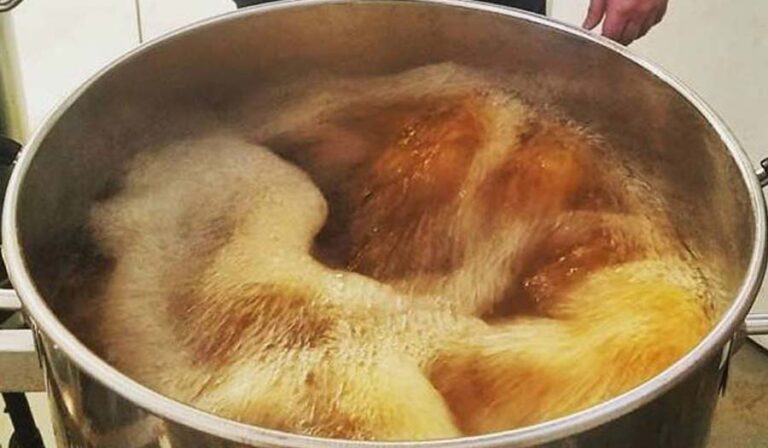
ブリューケトルは、自家製ビール醸造に欠かせない器具のひとつだ。お湯を沸かし、麦芽エキスやホップなどの原料を溶かし、ビールのもととなる麦汁を作るために使います。ブリューケトルには、オールグレイン醸造用、エキス醸造用ともに、さまざまなサイズ、形状、材質のものがある。
最も基本的なケトルは、蓋と注ぎ口が1つのシンプルなケトルです。このタイプのケトルは抽出醸造によく使われ、初心者に最適です。通常、ステンレス、アルミニウム、銅製で安価です。
容量が小さいものは個人または少人数の家族での醸造に適しており、容量が大きいものは大規模な醸造に適している。基本的な発酵機能に加え、より高度な醸造釜のタイプには、内部温度計、偽底、バルブなどの機能を含めることができます。これらの機能は、プロセスをより正確に制御できるため、オールグレイン醸造にはより重要です。
ビール醸造用ケトルの種類
プラスチック製ビール醸造用ケトル
プラスチック製の醸造用ケトルは、家庭での醸造、特に初心者のための最も一般的な選択肢です。通常、食品グレードのプラスチック製で、手頃な価格で軽量なため、移動や保管が簡単です。丈夫で壊れにくいので、小規模な家庭での醸造に適しています。プラスチック製ケトルは耐腐食性も高く、洗浄も簡単なので、1回きりの醸造や、さまざまなレシピを試す醸造に適している。しかし、使用時間が長くなるにつれて、プラスチックは臭いを蓄積したり、変形したりすることがあるので、長期の大規模な醸造には適していません。
ステンレス製ビール醸造用ケトル
ステンレス製醸造用ケトル は、その優れた耐食性と強度のため、多くの経験豊富な醸造家に愛用されています。ステンレススチールは酸性やアルカリ性の物質によって腐食されにくく、醸造液と反応しないため、ビールの純粋な風味を保証します。通常、プラスチック製のケトルよりも耐久性があり、高温や強い物理的衝撃に耐えることができ、長期間の使用に非常に適しています。ステンレス製のケトルは通常より高価ですが、その耐久性と長期的な使用価値は、多くの家庭での醸造愛好家や小規模な醸造所のための最初の選択肢になります。
ガラス製ビール醸造ケトル
ガラス製ケトルの最大の利点はその透明性で、醸造者は発酵過程における液体の変化、泡の発生、酵母の活動を見ることができる。これは、醸造プロセスをより理解するのに役立つので、醸造初心者にとって特に重要です。ガラス素材はビールの成分と化学反応を起こさず、ビールの味と品質を保証します。ただし、ガラス製ケトルは比較的重く壊れやすいので、使用する際は特に注意が必要です。また、ガラス釜は通常より高価で、発酵過程の観察に注意を払い、ある程度の醸造経験がある人に適している。
ビール醸造釜の攪拌
攪拌式ビール醸造釜は、攪拌装置を内蔵しており、糖と酵母を均一に混合して発酵効果を高めることができます。このタイプの仕込釜は通常、発酵の促進や醸造効率の向上を必要とするシーンに適しています。バッチ醸造や、発酵条件を細かくコントロールする必要がある一部の上級醸造家には、攪拌式ビール醸造釜が理想的です。攪拌装置が内蔵されているため、酵母の沈殿を抑え、酵母の活性を十分に発揮させることができ、醸造の品質を確保することができます。
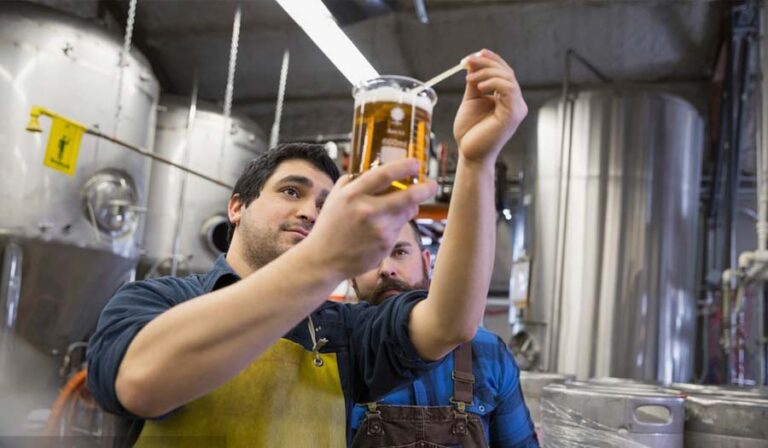
ビール醸造における釜の役割
醸造工程では、水、麦芽、ホップ、酵母などの原料を醸造釜の中で混ぜ合わせる。その後、ケトルを加熱して混合物を沸騰させる。この沸騰工程は以下の理由から非常に重要である:
- 殺菌:原料を煮沸することで、混合物中に存在するバクテリアや野生酵母を死滅させ、クリーンな発酵プロセスを確保します。このステップは、異臭を防ぎ、ビールの品質を維持するために不可欠です。
- 酵素の活性化:煮沸によって麦芽の酵素が活性化され、デンプンから発酵可能な糖への変換が促進される。このプロセスは糖化と呼ばれ、酵母がアルコールを生成するために必要な栄養素を供給するために不可欠である。
- ホップの利用:煮沸によってホップの苦味、風味、アロマを引き出し、麦芽の甘みとのバランスをとる。ホップの煮沸時間はビールの最終的な味に大きく影響する。
様々なケトル素材の長所と短所
- ステンレススチール:ステンレススチールは耐久性に優れ、メンテナンスが簡単で、腐食しにくいため、醸造用ケトルの一般的な選択肢です。熱伝導に優れ、原料との反応も少ないため、ビールの純度を保つことができます。
- アルミ製:アルミ製ケトルは軽量で価格も手ごろで、すぐに熱くなるため、時間を節約したい醸造家にとっては良い選択です。しかし、アルミニウムは特定の原料と反応し、ビールの味に影響を与える可能性があります。アルミ製のケトルを選ぶ場合は、非反応性のコーティングが施されていることを確認してください。
- 銅:銅製ケトルは熱伝導率が高いことで知られ、熱を均等に分散させることができるため、醸造効率が向上します。しかし、ビールの味に影響を与える酸化を防ぐため、銅ケトルは定期的に洗浄する必要があります。また、銅製のケトルはステンレス製やアルミ製のケトルよりも高価な傾向にあります。
醸造用ケトルの正しい選び方とは?
サイズ
醸造用ケトルのサイズと容量は、あらゆるレベルの醸造家にとって考慮すべき重要な要素です。適切なサイズのケトルであれば、材料を入れるのに十分なスペースがあり、溢れることなく沸騰させることができます。醸造を始めたばかりであったり、少量の醸造を好む場合は、5~10ガロンの容量のケトルで十分です。しかし、経験豊富な醸造家や大量のビールを醸造する予定がある場合は、より大きな容量のケトルが必要になるかもしれません。
特にスペースが限られている場合は、ケトルのサイズを考慮することも重要です。背が高く幅の狭いケトルもあれば、背が低く幅の広いケトルもあります。淹れる場所を測り、ケトルのサイズを考慮し、うまくフィットするようにしてください。さらに、特にケトルを頻繁に移動させる予定がある場合は、ケトルの重さも考慮してください。持ち運びが必要な場合は、軽いケトルの方が便利です。
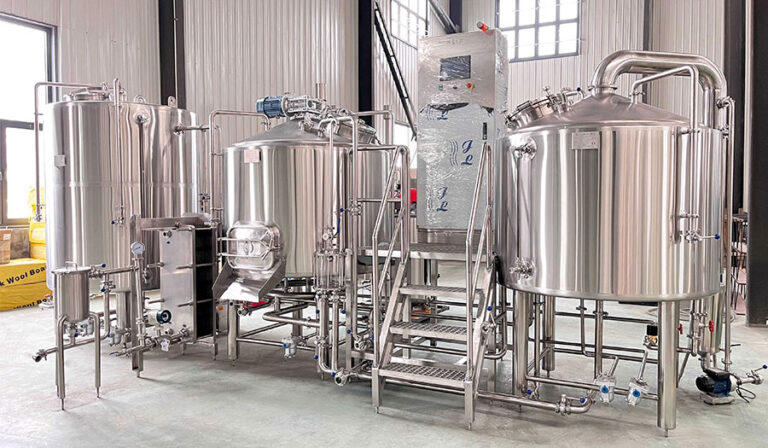
ケトル素材
醸造用ケトルの素材として最もポピュラーなのは、ステンレスと銅の2種類です。ステンレス製ケトルは耐久性、耐腐食性に優れ、洗浄が簡単なことで知られています。彼らはまた、醸造プロセス中に一貫した温度を確保する、優れた保温機能を持っています。ステンレス鋼は、耐久性と耐腐食性であるため、醸造用ケトルのための最も一般的に使用される材料です。また、洗浄やメンテナンスが簡単で、最も衛生的なオプションの一つと考えられています。
銅のやかんは熱伝導率が高いので珍重され、銅は醸造材料と相互作用してビールに微妙なフレーバーやアロマを加えます。銅製のケトルは、変色を防ぐために定期的な洗浄とメンテナンスが必要なことは注目に値します。
温度制御機能
温度管理はビール醸造プロセスの重要な側面であり、ビール醸造ケトルの適切な機能は、ビールの品質を大幅に向上させることができます。重要な温度管理機能は、内蔵の温度計です。温度計が内蔵されていれば、道具を追加することなくビールの温度をモニターすることができます。また、電気ヒーターや調節可能なガスバーナーなど、温度調節システムが内蔵されているケトルもあります。これらの機能は、最適な結果を確実にするために醸造温度を正確に制御することができます。
ブリューケトルのその他の特徴
ビール醸造用ケトルの中心的な機能は、材料を保持し加熱することですが、他の機能は醸造体験を向上させることができます。そのひとつが、ビールを簡単に移し替えるための内蔵タップやバルブです。タップがあれば、サイフォンや手動で注ぐことなく、ビールをポットから発酵槽や樽に直接移すことができます。この機能は、醸造プロセスを簡素化するだけでなく、汚染のリスクも低減します。
もうひとつ考慮すべき点は、ケトルにドーム型のフタが付いているか、結露コレクター内蔵のフタが付いているかです。ドーム型の蓋は、蒸発と結露をよくし、ビールの味と香りを高めることができます。
予算の考慮
多くの醸造家にとって、ビール用ケトルを選ぶ際に予算が重要な要素であることは間違いありません。醸造用ケトルの価格帯は、サイズ、材質、追加機能などの要因によって大きく異なる場合があります。ステンレス製ケトルは、一般的に銅ケトルよりも手頃な価格であり、予算に敏感な醸造家のための人気のある選択肢になります。アルミケトルは、多くの場合、最も経済的な選択肢ですが、彼らはステンレス鋼や銅ほどの耐久性や熱伝導性ではないかもしれません。
醸造のニーズや長期的な目標と予算のバランスを取ることが重要です。安価なケトルを選びたくなるかもしれませんが、要件を満たす高品質のケトルに投資することは、長期的にはお金を節約することができます。
最適なケトルの選択
自分に合ったケトルを選ぶには、個人的なニーズと経験に左右される。素材の選択、容量の決定、補助器具の充実度、ブランドの評判など、すべてを考慮に入れる必要があります。初心者は適度な容量、安全な素材、洗浄が簡単なものを、ベテランは容量が大きく機能が充実しているものをニーズに応じて選ぶとよいでしょう。

